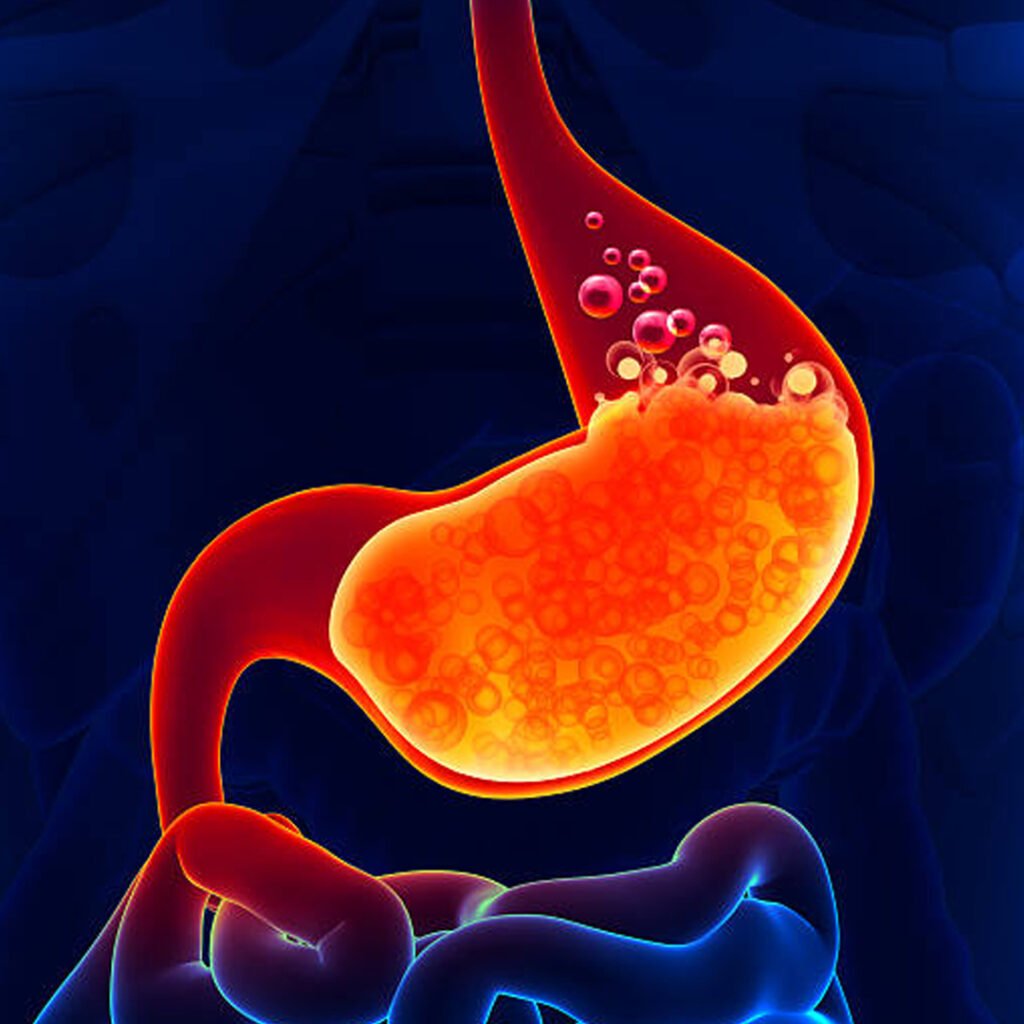Hyperacidity
Introduction
Hypercidity, also known as acid dyspepsia or acid reflux, is a common digestive disorder caused by excessive secretions of stomach acid. It leads to stomach lining, burning sensations, swelling, nausea and irritation of discomfort. Poor dietary habits, stress, irregular food, and unhealthy lifestyle are the major contributors, often requiring medical attention when being frequent.

Types of Hyperacidity
Gastric Hyperacidity
It occurs when the stomach produces excess acid, causing dignity, abdominal pain, swelling and discomfort after consuming spicy or oily food.
Duodenal Hyperacidity
Excessive acid secretion affects the duodenum, causing burning sensations, abdominal pain, and irritation, especially on an empty stomach or late night.
Reflux Hyperacidity
Happens when stomach acid flows back into the esophagus, resulting in heartburn, sour taste, chest discomfort, and throat irritation frequently.
Functional Hyperacidity
Any structural abnormality develops, but causes stress, irregular food, or lifestyle issues, acidity, nausea and upper abdominal discomfort.
Causes of Hyperacidity:
- Eating excessive spicy, oily, or junk food increases stomach acid production and leads to frequent hyperacidity issues.
- Skipping meals or having irregular eating habits disrupts digestion and triggers excess acid secretion in the stomach.
- High consumption of caffeinated drinks like tea, coffee, or energy drinks stimulates acid production in the stomach.
- Excessive alcohol intake irritates the stomach lining and promotes the overproduction of gastric acid.
- Smoking weakens the lower esophageal sphincter, allowing acid to flow back and causing hyperacidity symptoms.
- Chronic stress and anxiety increase stomach acid secretion, leading to frequent episodes of hyperacidity and discomfort.
- Prolonged use of certain medications, such as painkillers or anti-inflammatories, can damage the stomach lining and increase acidity.
- Lack of proper sleep affects digestion and triggers an imbalance in acid secretion, worsening hyperacidity problems.
- Overeating or consuming heavy meals late at night puts pressure on the stomach and leads to acid reflux.
- Medical conditions like gastritis, ulcers, or GERD can cause continuous hyperacidity and related digestive issues.
Clinical features of Hyperacidity:
Heartburn
A burning sensation in the chest occurs due to excessive acid reflux from the stomach.
Stomach Pain
Persistent discomfort or pain in the upper abdomen caused by increased acid secretion levels.
Bloating
Additional gas formation in the stomach causes a feeling of fullness and discomfort.
Nausea
A constant uneasy sensation in the stomach often results in vomiting or an urge to vomit.
Sour Belching
Frequent belching with a sour taste occurs due to acid regurgitation into the esophagus.
Symptoms associated with Hyperacidity:
- Burning in the chest and throat, especially after eating spicy or oily food.
- Frequent or bellchuni with a sour or bitter taste in the mouth.
- The upper abdominal pain or discomfort that deteriorates on an empty stomach or after eating more.
- Nausea or vomiting due to excessive acid irritation in the stomach lining.
- Loss of appetite due to frequent inflammation, heaviness and discomfort in the stomach.
- Excessive saliva as a reflex reaction to neutralize high levels of stomach acid.
- Excessive salivation as a reflex response to neutralize the high levels of stomach acid.
- Sleep patterns due to night time acidity, resentment and stomach discomfort.
Investigations in Hyperacidity:
- An endoscope is inserted through the mouth to examine the esophagus, stomach and duodenum. This helps identify ulcers, inflammation, or structural abnormalities caused by additional acid production, providing a clear approach to accurate diagnosis and proper treatment.
A barium-based liquid is swallowed before exofagus and stomach imaging before imaging. This test detects abnormalities such as acid reflux, hiatal hernia, ulcers, or narrowness of the esophagus caused by hypersidity, providing the necessary information for the treatment plan.
A small probe is placed in the esophagus to measure acid levels in 24 hours. This helps evaluate the frequency and severity of acid reflux, helps in diagnosis of gastroosophageal reflux disease (GERD) associated with hypercidity problems.
This test measures the amount and acidity of gastric secretion. This involves inserting a tube to the stomach to collect samples, which helps identify conditions such as the zollinger-elison syndrome, ulcers, and hypersidity due to excessive acid production.
Ultrasound imaging of the abdominal region detects stomach and duodenal abnormalities. It helps identify issues like gastritis, ulcers, gallbladder problems, and liver conditions that may contribute to hyperacidity, assisting doctors in selecting the correct treatment approach.
H. pylori infection is a major cause of hyperacidity and ulcers. Testing can be done using breath, stool, or blood samples to confirm bacterial presence, helping doctors provide targeted antibiotic and acid-reducing treatments for better management.
A CBC helps assess overall health and detect anemia due to chronic hypercidity or ulcers. Low hemoglobin levels may indicate internal bleeding due to prolonged acid irritation, helping doctors to diagnose severity and plan effective treatment strategies.
This test detects hidden blood in the stool, which may indicate the ulcer of the bleeding caused by hypersidity. This is a simple but effective investigation to quickly diagnose gastrointestinal damage and prevent serious complications related to excessive acid production.
A thin tube with the sensor is inserted into the esophagus to measure muscle contraction and sphinkter strength. It evaluates esophageal functioning, detects issues related to reflux, and identifies hypersidity-inspired mobility disorders, helps doctors suggest proper treatment plans.
The patient consumes a urea solution containing carbon isotopes, and breath analysis is done for the level of carbon dioxide. A positive result H. Pylori confirms infection, which is often responsible for hypercidity, gastritis and peptic ulcers, guides target therapy.
